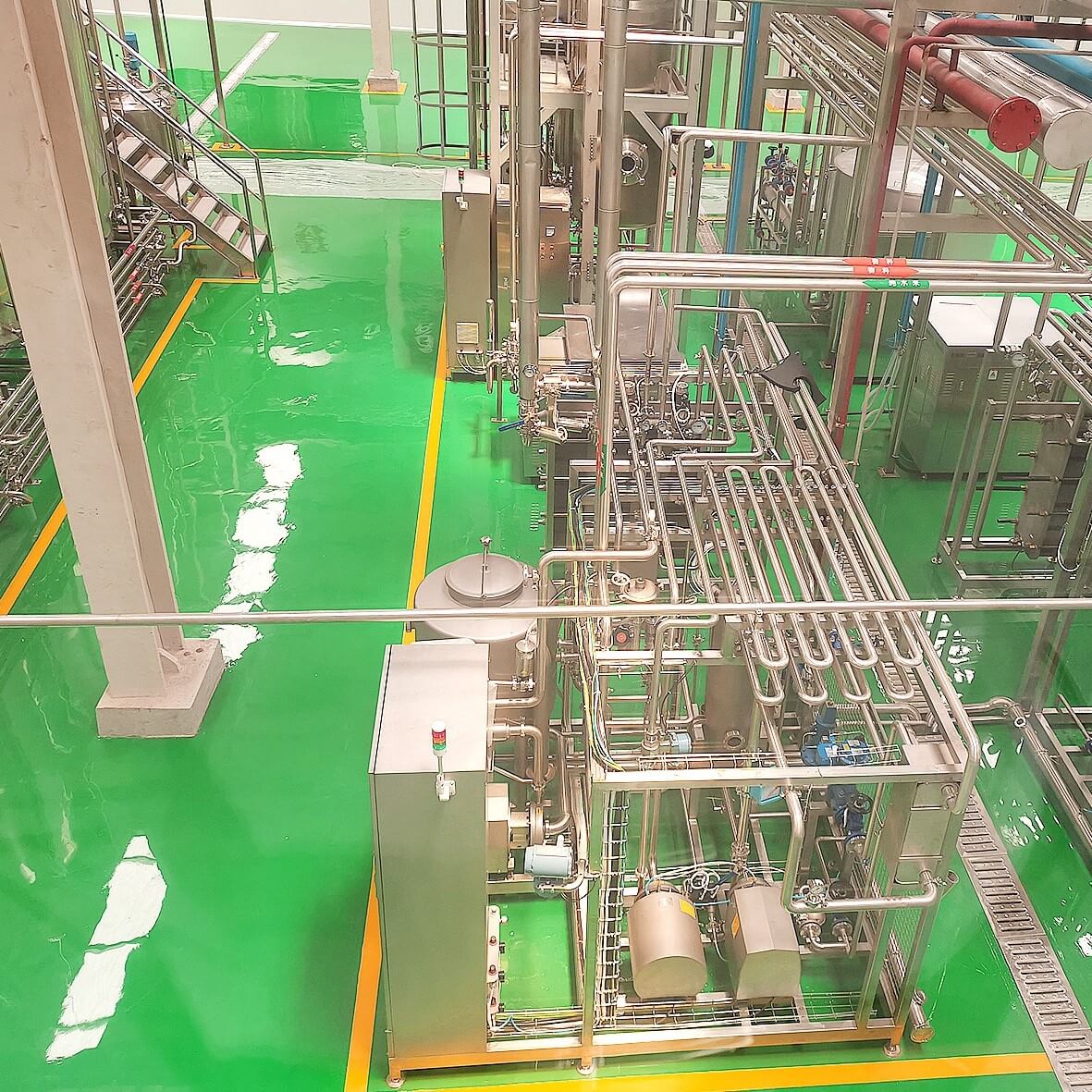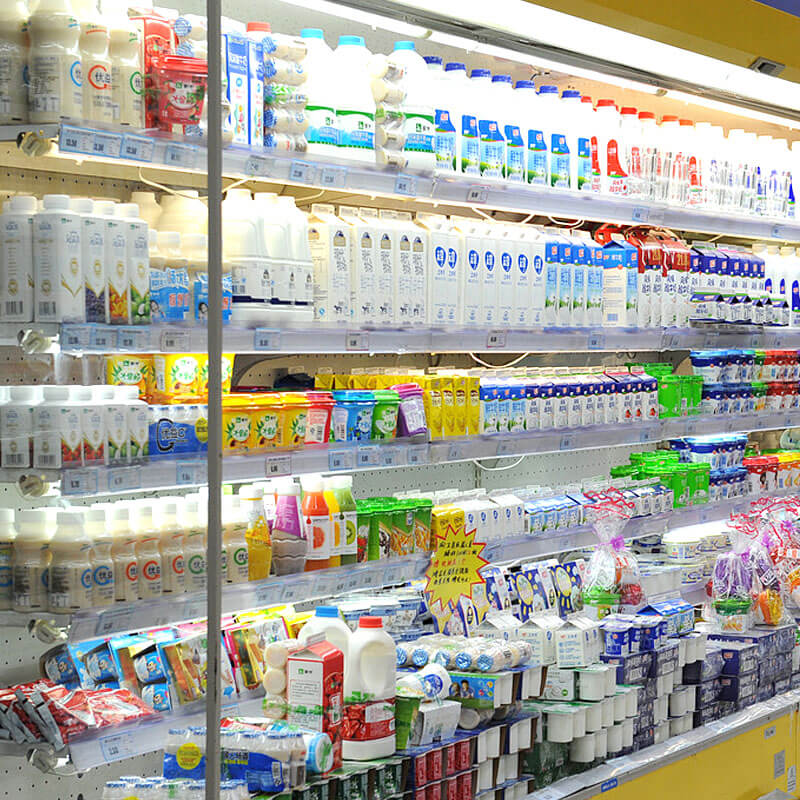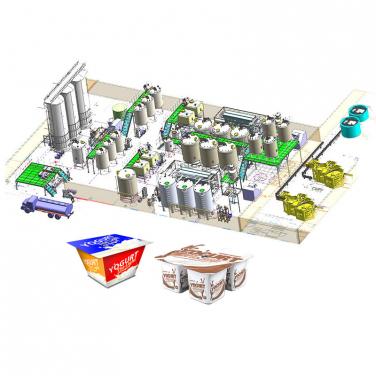
The construction of milk factories in Africa involves multiple key links, which require comprehensive consideration of local resources, market demand, technological feasibility, infrastructure conditions, and economic sustainability. The following are some key points that may need to be considered when building African milk factories:
2. Raw material supply: • Establish a stable milk supply chain: Collaborate with local farmers to establish dairy cooperatives or direct procurement systems to ensure sufficient supply of high-quality fresh milk Enhance local dairy farming industry: provide technical support and training to improve the feeding management level and milk production of dairy farmers.
3. Site selection and facility design: • Choose a suitable factory site: Priority should be given to locations close to ranches, with convenient transportation, sufficient water sources, and in compliance with environmental requirements Facility construction: including raw material receiving area, pre-treatment workshop, sterilization processing area, fermentation room, filling line, packaging area, refrigerated warehouse, laboratory and office area, etc.
4. Equipment introduction and installation: • Select production equipment suitable for African environmental characteristics based on production capacity and budget, such as high-temperature resistant, corrosion-resistant, and energy-saving and efficient equipment Install automated control systems to improve production efficiency and product quality, and reduce human error.
5. Technical and management support: • Introduce advanced dairy processing techniques and technologies from both domestic and international sources, while also carrying out necessary localization renovations Train local employees, establish an effective quality control system and food safety management system.
6. Energy and logistics: • Considering the issue of unstable power supply, it may be necessary to equip backup generators or adopt renewable energy solutions such as solar energy Establish a cold chain logistics system to ensure the full low-temperature transportation of finished products from the production line to the market.
7. Policy and regulatory compliance: • Comply with local government laws and regulations on food processing, environmental protection, hygiene permits, etc If possible, apply for government subsidies, tax incentives and other policy support to reduce investment risks and costs.
8. Social Responsibility and Community Relations: • Emphasize corporate social responsibility, create employment opportunities for the local area, promote economic development, and also pay attention to the impact on the environment, striving to achieve green and sustainable development as much as possible Strengthen communication and cooperation with the community, improve the quality of life of farmers through education and technical assistance, and jointly build long-term cooperative relationships.
In summary, building a milk factory in Africa is a systematic project that requires a comprehensive analysis of the local situation and the combination of international advanced experience to ensure the successful implementation of the project and achieve good economic and social benefits.

The scale of milk processing lines can be designed according to different production needs and capacity, ranging from small to large. The following are some characteristics of milk processing production lines of different scales:
1. Small milk processing line:
Suitable for family farms, small cooperatives, or rural areas.
The equipment is compact and the investment cost is relatively low.
The daily processing capacity may range from tens to hundreds of liters, suitable for local market supply and preliminary product deep processing, such as making pasteurized milk or handmade yogurt.
2. Medium size milk processing line:
Can handle thousands or even tens of thousands of liters of milk raw materials.
Equipped with more comprehensive pre-treatment, sterilization, fermentation, filling, and packaging equipment.
It can meet regional market demands and has a wider variety of products, including but not limited to pure milk, seasoned dairy products, yogurt, cream, etc.
3. Large milk processing line:
Like large-scale milk processing plants, the output value can reach tens of billions of yuan or more.
The equipment has a high degree of automation and advanced sterilization technology (such as the fully automatic milk production line using electric heating and equipped with a pasteurization cycle sterilization system).
With strong processing capabilities, the daily processing of raw milk can reach tens of thousands or even hundreds of thousands of tons, which can meet the supply needs of the national and even global markets.
Some large-scale milk processing industries have reached a scale of over 100 billion yuan, indicating that they must contain a large number of large-scale and modern milk processing production lines. These production lines not only have high output, but also have efficient automation control, strict quality monitoring, and a strong logistics distribution system.
The investment in the milk processing line mainly includes the following aspects:
1. Equipment investment: This is the largest expenditure, covering a series of required equipment from receiving raw milk, pretreatment (filtration, standardization, sterilization, etc.), cooling, fermentation (for yogurt products), filling, packaging to finished product refrigeration and quality testing. The cost of equipment required for production lines of different scales varies greatly, ranging from tens of thousands of yuan for small ones to tens of millions or even billions of yuan for large factories.
2. Factory construction and renovation: including purchasing or leasing land, constructing or renovating workshops that meet food production standards, as well as supporting infrastructure such as electricity, water treatment, and steam supply systems.
3. Raw material procurement: The main raw material used for production is fresh milk, which requires a continuous and stable supply channel, and takes into account the price fluctuations of milk.
4. Human resources: including salaries and training expenses for management personnel, technical personnel, and operators.
5. Energy consumption: The consumption of electricity, thermal energy, cold energy, etc. during the production process.
6. Operating costs: expenses related to daily maintenance, equipment depreciation, taxes, quality control and certification, marketing, and logistics distribution.
In terms of output:
1. Product output: Based on the design capacity of the production line, the daily, weekly, or monthly production capacity of milk or dairy products can be calculated, such as pasteurized milk, UHT milk, yogurt, or other dairy products that can be processed into tons per day.
2. Sales revenue: Calculated based on the sales price and quantity of products, different product types and market positioning will affect the final revenue level.
3. Profit return: The net profit obtained by deducting all production costs. This involves the impact of factors such as overall supply chain management efficiency, product quality control, and market strategy on profitability.
For example, in the accounting school, when using the input-output method for accounting, when purchasing finished products for resale or purchasing fresh milk for processing and sales, the input that the enterprise can deduct is calculated based on the actual tonnage of the sold products. This means that the input cost of the enterprise can be converted into higher output income through reasonable tax planning and efficient operation.
The equipment configuration of African milk factories should be customized based on the factory's scale, target product types, technical requirements, and local environmental conditions. The following is a list of basic and advanced equipment that may be required to establish an African milk factory:
1. Raw material receiving and pretreatment equipment: • Raw milk receiving tank: used to store fresh milk received from ranches or suppliers Filtering equipment: used to remove impurities from milk, such as grass shavings, cow hair, etc Milk fat separator: used to standardize the fat content in milk Cooling system: Quickly cool the raw milk to a suitable temperature to inhibit bacterial growth and prepare for further processing.
2. Sterilization and processing equipment: • Pasteurization machine: Moderately heat and sterilize milk through pasteurization method UHT sterilization machine (if necessary): adopts ultra-high temperature instantaneous sterilization technology to achieve aseptic state of the product and extend its shelf life Fermentation tank: used for the production of yogurt and other fermented dairy products.
3. Filling and packaging equipment: • Automatic filling machine: can adapt to liquid filling of different container types, such as bottled, bagged, cupped, etc Sealing machine: Heat or cold seal container openings to ensure product sealing Packaging line: including automatic packaging machines, labeling machines, inkjet printers, etc., to complete the external packaging work of products.
4. Refrigeration and storage equipment: • Refrigeration warehouse: stores unprocessed raw milk and processed but unpackaged products, maintaining low temperature to ensure product quality Freezer (if there is a need for frozen products): used for rapid freezing and long-term preservation of dairy products.
5. CIP cleaning system: • Online cleaning system, used to regularly clean all parts of the production line that come into contact with food, ensuring food safety and hygiene standards.
6. Laboratory equipment: • Quality control laboratory: equipped with testing instruments such as dairy analyzers, microbial incubators, pH meters, freezing point meters, etc., to conduct quality testing on raw materials and finished products.
7. Energy supply and environmental protection facilities: • Backup generators: Due to unstable power supply in some areas, a backup power supply system may be required Wastewater treatment facilities: treat wastewater generated during the production process to ensure compliance with environmental regulations.
8. Automation control system: • PLC or SCADA system: Realize automation control and data recording of production processes, improve efficiency and accuracy.

The market prospects of African milk factories largely depend on the following key factors:
1. Population growth and consumption trends: Africa has a huge young and rapidly growing population, which provides a huge potential market for dairy consumption. With the acceleration of urbanization, the expansion of the middle class, and the increasing awareness of nutrition and health among consumers, the demand for milk and other dairy products is increasing.
2. Local production and import substitution: Many African countries currently rely on imported dairy products to meet market demand. Building local milk factories can help reduce dependence on external markets, lower costs, and provide products that better suit local tastes.
3. Policy support and investment environment: The government's support for agriculture and food processing industry is also an important factor affecting the development prospects of milk factories. For example, some African countries encourage the development of the dairy industry through subsidies, tax incentives, infrastructure construction, and technical support.
4. Supply chain integration and development: Establishing an efficient milk supply chain is the key to ensuring the success of factory operations. Including the construction and management of milk source bases, improvement of cold chain transportation networks, and expansion of terminal sales networks.
5. Food safety and quality control: With the improvement of food safety standards and consumer requirements for product quality, milk factories that can implement strict quality management systems and obtain relevant certifications will become more competitive.
6. Technology application and efficiency improvement: The adoption of advanced processing technology and information management systems can significantly improve the production efficiency and product quality of African milk factories, thereby enhancing their market competitiveness.
In summary, although Africa faces challenges such as outdated infrastructure, unstable power supply, and an incomplete cold chain system, given its huge market potential, government determination to promote industrial upgrading, and international support for agricultural development in Africa, the prospects for the African milk factory market are still broad. However, investors need to conduct a detailed evaluation based on specific national conditions, market demand, competitive landscape, and other factors before formulating a scientifically reasonable investment strategy.
Shanghai Beyond Machinery Co., Ltd
Beyond Machinery specializes in the design and manufacturing of milk processing equipment. Please contact us now, and our professional technical engineers will customize the equipment plan for milk processing plant and provide a quotation. Please contact us now to obtain the latest equipment plan and quotation.



